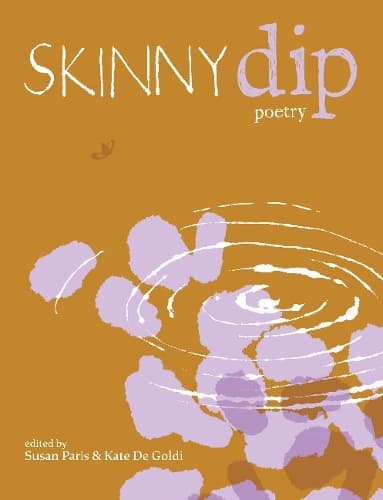Review: Skinny Dip Poetry
Reviewed by Erica Stretton
Nits, pepeha, the school caretaker, buying sweets in the dairy, the banning of bullrush, social anxiety, the strength of kapa haka, having no money and no lunch, the sick bay, the horrors of school camp… The poems in Skinny Dip Poetry have been carefully curated to appeal to readers in Years 7 (form 1) to 10 (form 4), roughly 11-14years old.
The book’s edited by consummate professionals Susan Paris and Kate de Goldi, who have worked on other collections together, including the best-selling Annual 1 and Annual 2. It shows: this collection is neatly organised, the poetry imaginative, fresh and a little subversive, the authors diverse and innovative.
The book is arranged into a school year, with a selection of 8-11 poems for each term. Each poem is a named form, from the highly structured villanelle and sestina, to the playful free verse and found poems. At the end of the book, there’s a Note on Poetic Form which sets out easily and readably the conventions and structure of each type of poem in the collection.
The very first poem in the collection, Vanessa Mei Crofskey’s School sucks but at least ur friends are there, opens the school year. We then leap in and are pulled straight into the classroom, to the playground at lunchtime, all the spaces of a school term:
miss the lush red first kiss of a fresh 1B5
and the girls in ur class with lip gloss scented stationery
& the boys who draw on their mates legs with sharpies &
also I guess learning new things every day
The collection of poets is impressive: well-established and famous poets Bill Manhire, Lynley Edmeades, Ben Brown and Ashleigh Young feature alongside rising stars such as Crofskey, Nina Mingya Powles, Freya Daly Sadgrove and Kōtuku Titihuia Nuttall.
The book will be a treat for teachers, with great scope for use with classes. The notes explaining poetic form give a solid framework for building writing exercises; the poems themselves are sophisticated examples of how to mix and complicate poetry using the structure as jumping-off point. The poems show how to paint a picture and use rhythm and language to advantage while leaving plenty unsaid. There’s a tacit understanding within the book that all form can be a little fluid and that poetry should inhabit a space with some chaos.
The poets demonstrate a youthful energy and deftness in dealing with their topics. Despite the focus being on readers of Y7-10, there is also plenty here for the adult reader, for anyone who has been in a New Zealand school and remembers PE challenges, the “tyranny” of the school office receptionist, their grandparents complaining about new-fangled technology and the vast importance of one’s peers as an early teen.
But the focus is really to appeal to young people. In a poem called Please excuse my strange behaviour, Sam Duckor-Jones explores the complicated growth and change in this age bracket with lines such as
my hair
grows as fast as bamboo /my muscles
flicker like astonished fireflies / my mouth goes sweet
and further down the page, dips into the tongue-tied struggle to express oneself:
my silence
rattles in my body…
sometimes…
uh
um
hello
do you want some of my chips?
Skinny Dip Poetry is characterised throughout by these unexpected, deep and expandable moments, and will be a thought-provoking addition to the bookshelf and school library collection.
Reviewed by Erica Stretton
